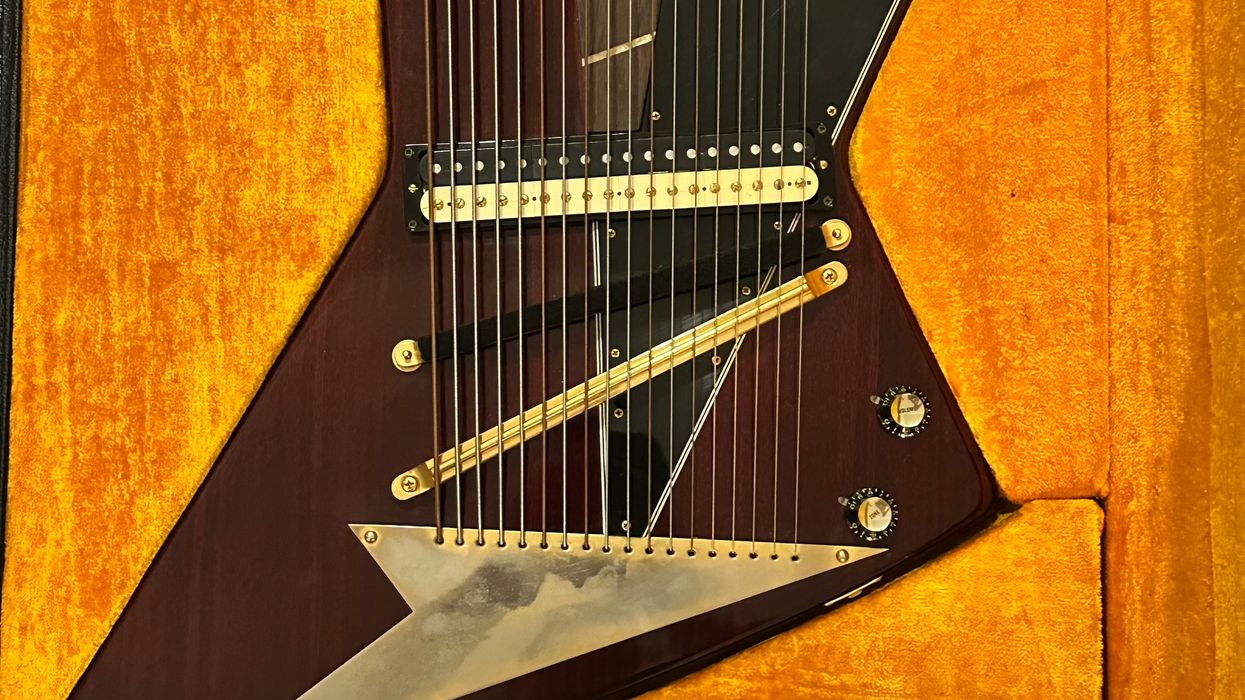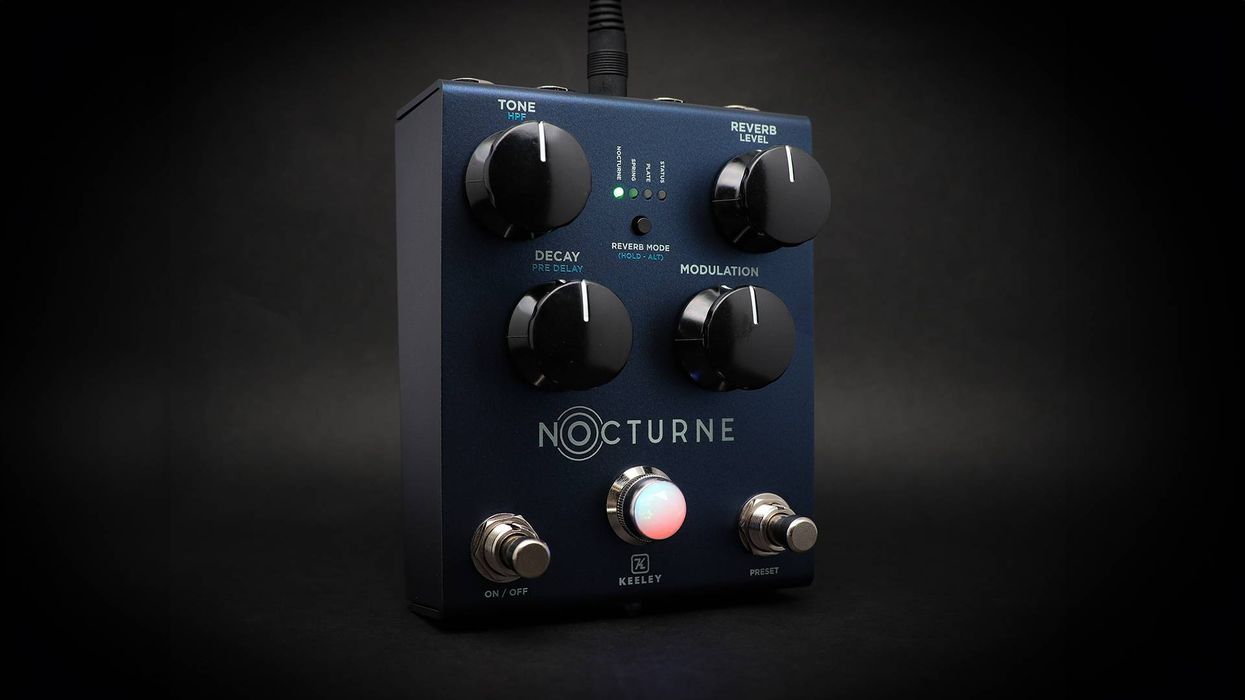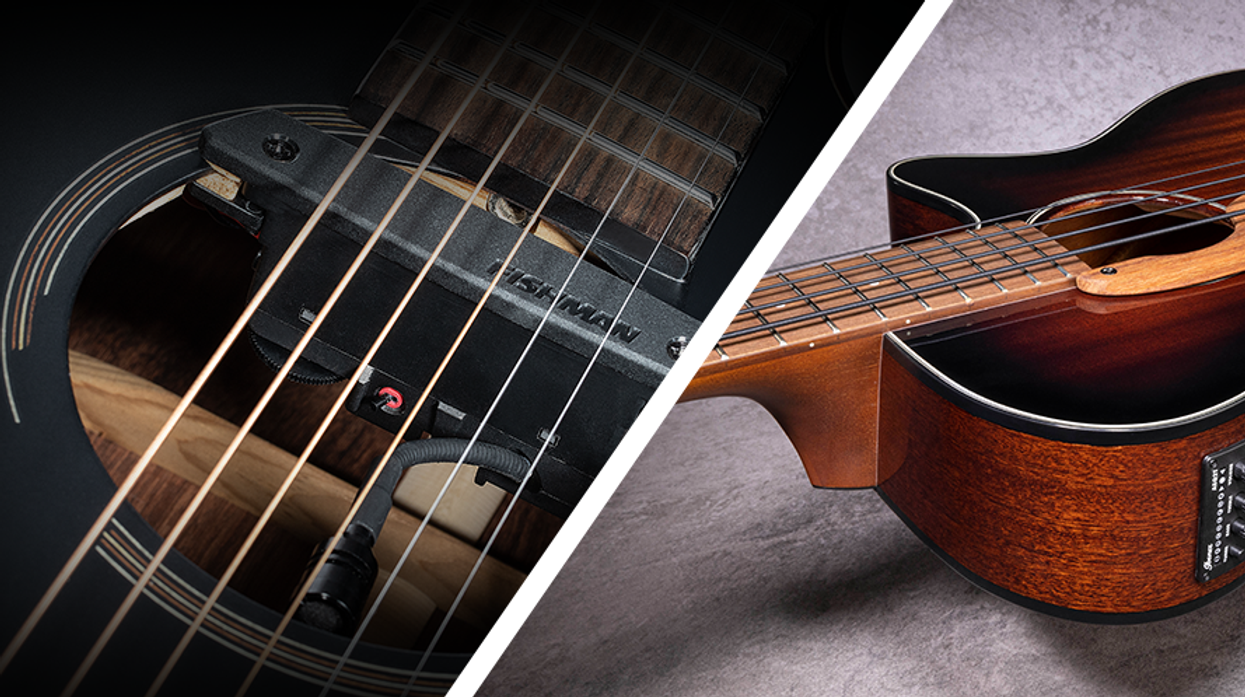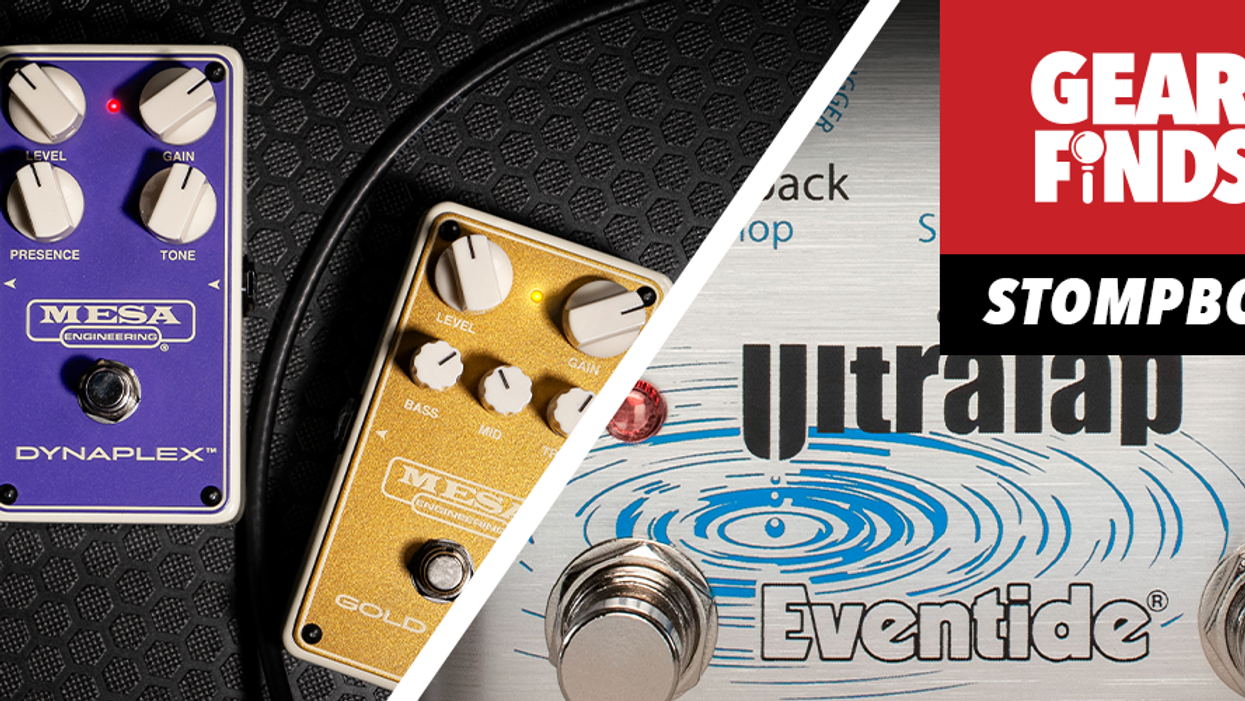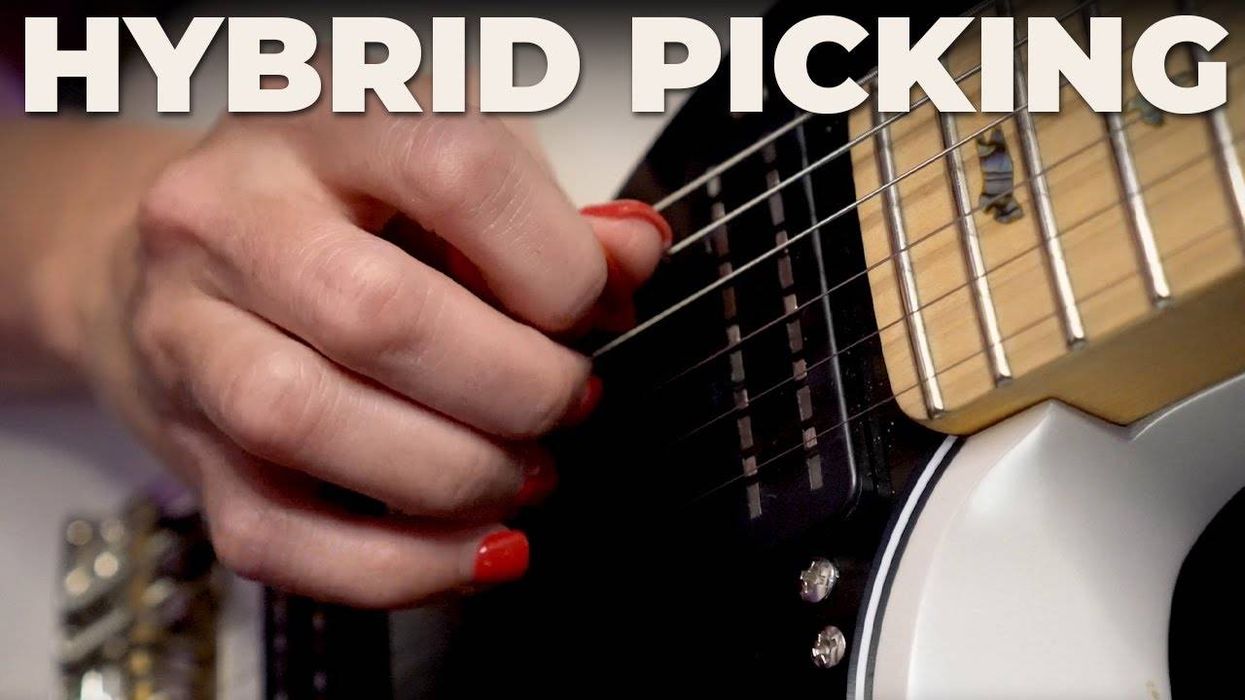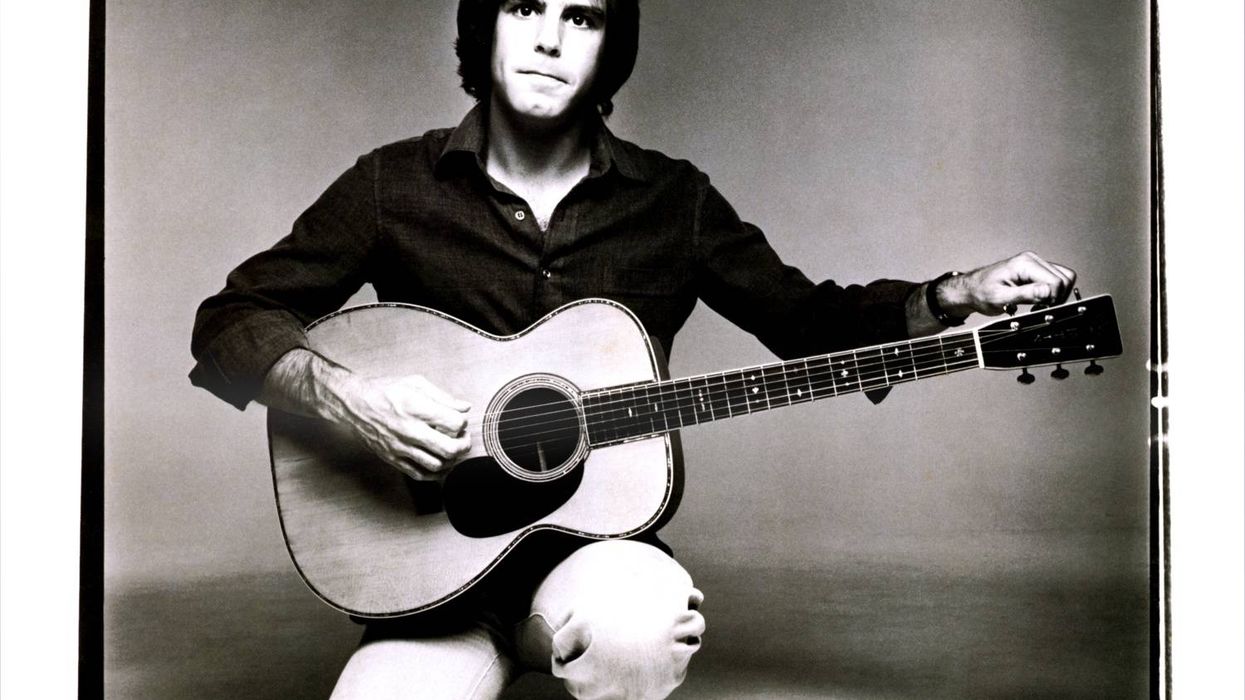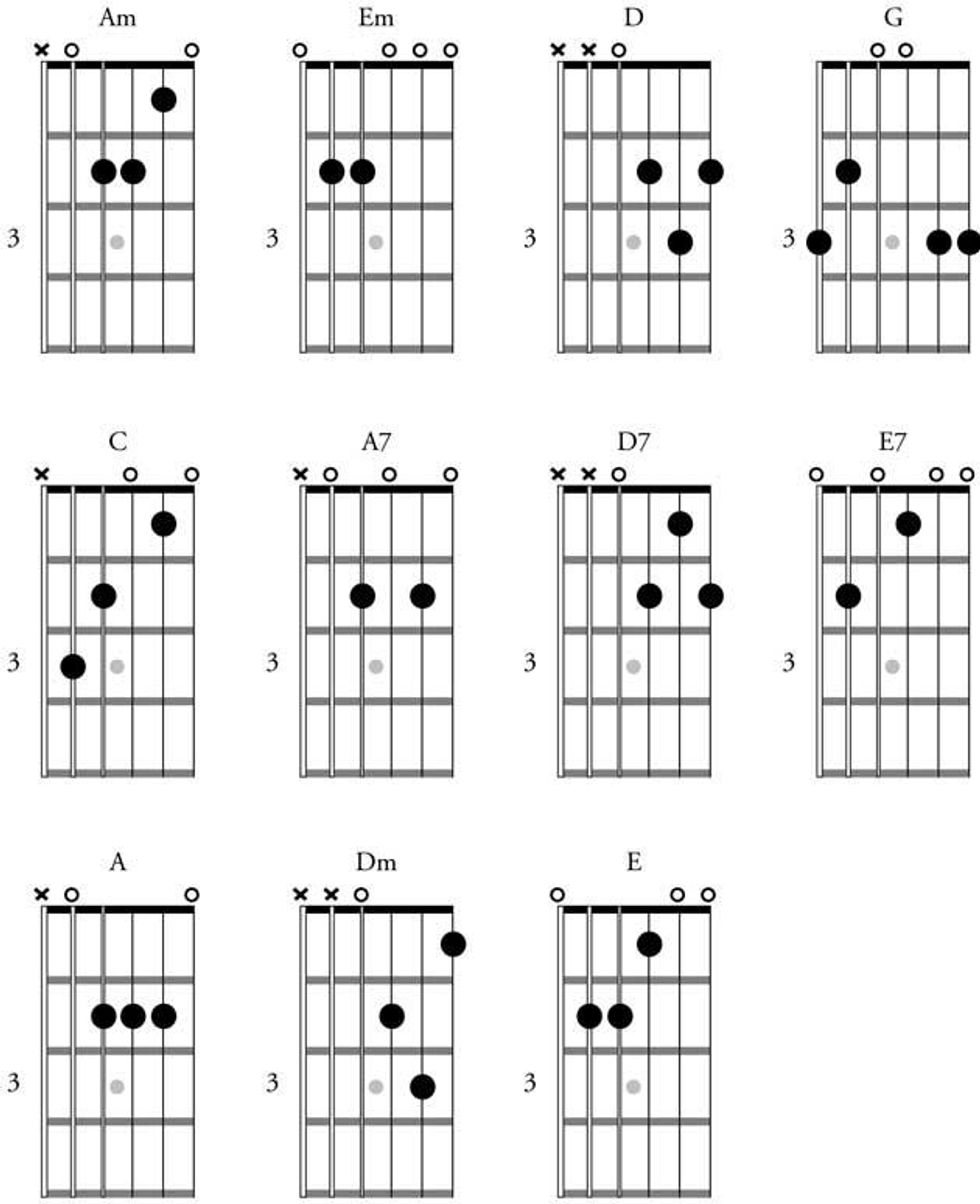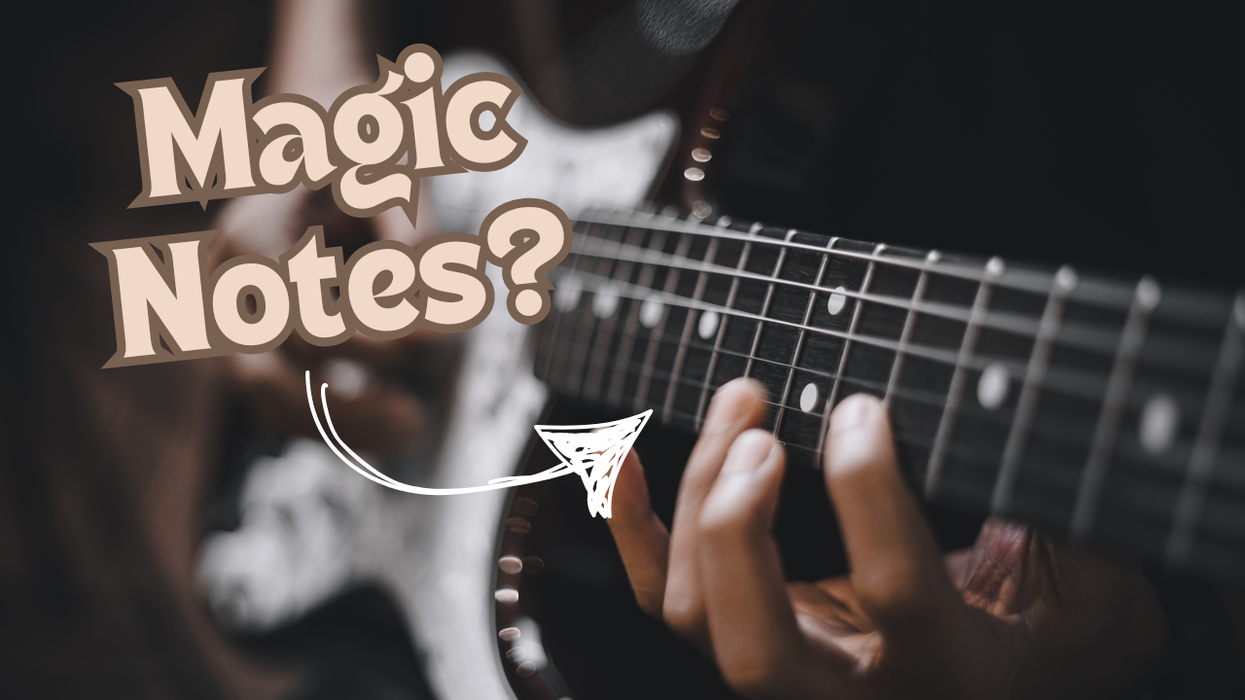Soloing over one chord can either be
the most freeing musical experience or
the most terrifying. When it’s just a single
chord that you’re jamming over, you have
fewer harmonic choices, yet the musical
doors are wide open. Having some structure
will help get you started, and this lesson
will offer some ideas you can try over a one-chord
vamp in a blues style. For this lesson,
we’re going to solo over an E9 (E–G#–B–
D–F#) groove, as shown in Fig. 1.
or download example audio

E9 is a great blues/rock chord that you can jam over for hours. All of this lesson’s examples sound great accompanied by the audio track you can download here. (You’ll find it with the online version of this column.) As a soloist, you have a ton of choices over the E9 chord, but we’re going to focus on the E minor pentatonic scale and E Mixolydian mode, both of which work well in this context.
For our first riff in Fig. 2, let’s check out some moving sixth intervals pulled from the E Mixolydian mode (E–F#–G#–A–B–C#–D). Since this mode contains all the notes of the E9 chord, the riff fits perfectly over our vamp. For each of the sixths, I’m sliding into the interval’s lowest note to create a bluesy or jazzy feel. Notice how we finally rest on some inside notes—B and G#, the 5 and 3 of the E9 chord, respectively.
or download example audio

Fig. 3 is built on an ascending E9 arpeggio that starts on the 3 of the E9, G#. Because arpeggios are the exact notes of a chord played one at a time, this riff is a perfect match for our rhythm vamp. Arpeggios provide a great way to avoid the sound of scales, while still hitting all the choice notes. To find some fresh alternatives, try picking the notes in a different order.
or download example audio

Next, let’s combine our old favorite, the E minor pentatonic scale (E–G–A–B–D), with E Mixolydian, as in Fig. 4. One of the sonic cornerstones of the blues comes from mixing the lowered 3 (b3) and the natural 3. This example contains both G (the b3) from E minor pentatonic and G# (the 3) from E Mixolydian. Playing with the minor-meets-major sound of these two notes makes this riff interesting. Toss in a few bluesy bends, and you’ll have a simple, effective riff to get your jam on.
or download example audio

Start simply and explore the new sounds these examples put at your fingertips. Since the pentatonic scale works so well over the E9 chord, don’t be afraid to lean on this five-note workhorse when you jam. As you get more comfortable with the Mixolydian sounds from this lesson, integrate them into your playing for a unique and interesting take on the blues.
 Marc Schonbrun
Marc Schonbrun
Marc Schonbrun graduated magna cum laude from the Crane School of Music in New York. He is an active educator, writer, and performer in the San Francisco area, and has an eclectic performing background that includes classical concertos, jazz trios, and rock bands. An active lecturer, Schonbrun frequently tours the country explaining music technology to players and teachers. Visit marcschonbrun.com for more info.
or download example audio

E9 is a great blues/rock chord that you can jam over for hours. All of this lesson’s examples sound great accompanied by the audio track you can download here. (You’ll find it with the online version of this column.) As a soloist, you have a ton of choices over the E9 chord, but we’re going to focus on the E minor pentatonic scale and E Mixolydian mode, both of which work well in this context.
For our first riff in Fig. 2, let’s check out some moving sixth intervals pulled from the E Mixolydian mode (E–F#–G#–A–B–C#–D). Since this mode contains all the notes of the E9 chord, the riff fits perfectly over our vamp. For each of the sixths, I’m sliding into the interval’s lowest note to create a bluesy or jazzy feel. Notice how we finally rest on some inside notes—B and G#, the 5 and 3 of the E9 chord, respectively.
or download example audio

Fig. 3 is built on an ascending E9 arpeggio that starts on the 3 of the E9, G#. Because arpeggios are the exact notes of a chord played one at a time, this riff is a perfect match for our rhythm vamp. Arpeggios provide a great way to avoid the sound of scales, while still hitting all the choice notes. To find some fresh alternatives, try picking the notes in a different order.
or download example audio

Next, let’s combine our old favorite, the E minor pentatonic scale (E–G–A–B–D), with E Mixolydian, as in Fig. 4. One of the sonic cornerstones of the blues comes from mixing the lowered 3 (b3) and the natural 3. This example contains both G (the b3) from E minor pentatonic and G# (the 3) from E Mixolydian. Playing with the minor-meets-major sound of these two notes makes this riff interesting. Toss in a few bluesy bends, and you’ll have a simple, effective riff to get your jam on.
or download example audio

Start simply and explore the new sounds these examples put at your fingertips. Since the pentatonic scale works so well over the E9 chord, don’t be afraid to lean on this five-note workhorse when you jam. As you get more comfortable with the Mixolydian sounds from this lesson, integrate them into your playing for a unique and interesting take on the blues.
 Marc Schonbrun
Marc SchonbrunMarc Schonbrun graduated magna cum laude from the Crane School of Music in New York. He is an active educator, writer, and performer in the San Francisco area, and has an eclectic performing background that includes classical concertos, jazz trios, and rock bands. An active lecturer, Schonbrun frequently tours the country explaining music technology to players and teachers. Visit marcschonbrun.com for more info.





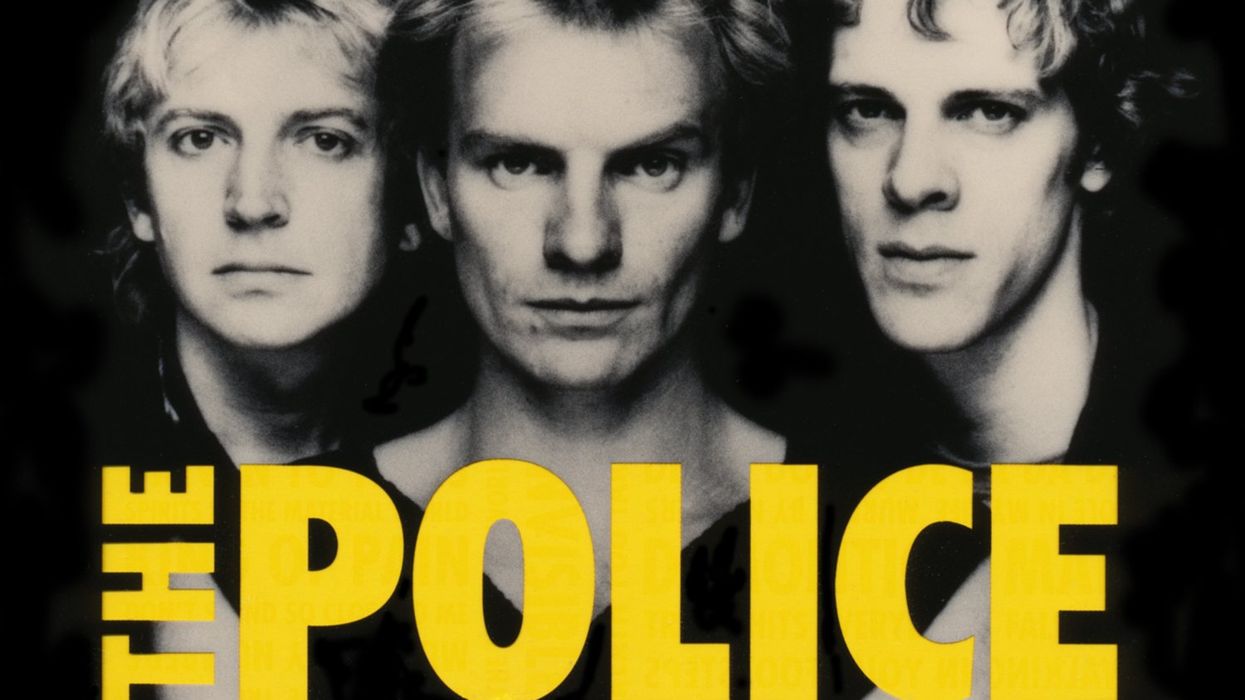
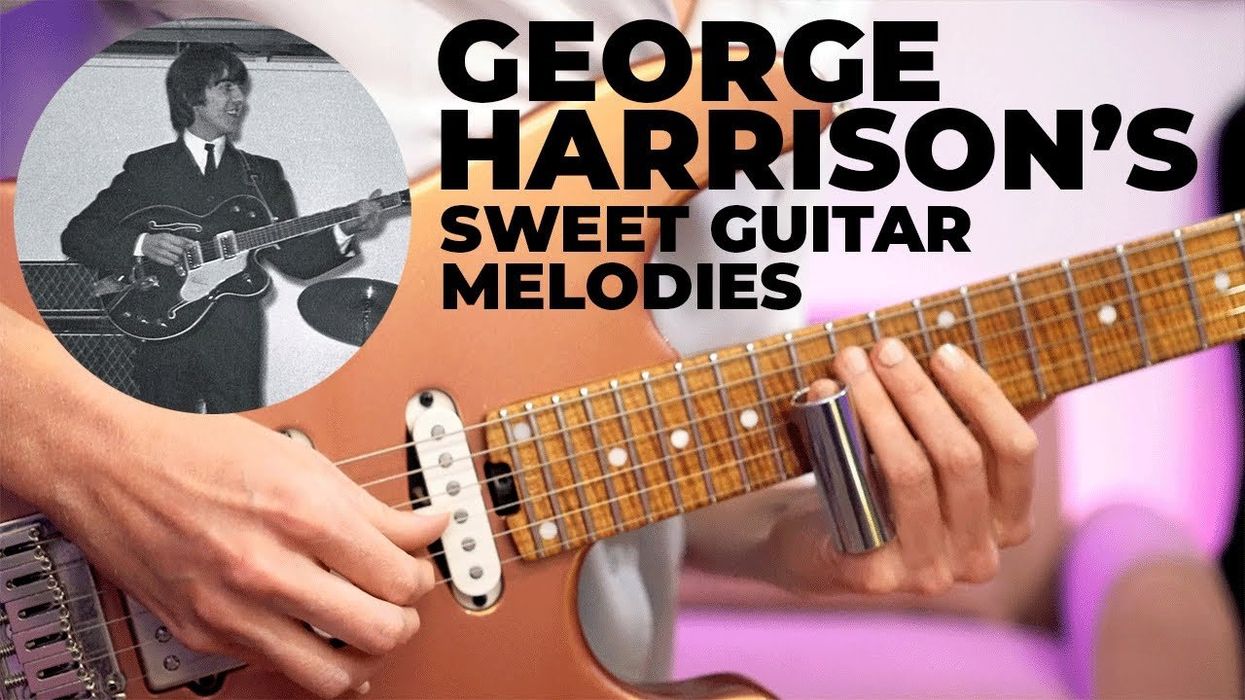

![Rig Rundown: Russian Circles’ Mike Sullivan [2025]](https://www.premierguitar.com/media-library/youtube.jpg?id=62303631&width=1245&height=700&quality=70&coordinates=0%2C0%2C0%2C0)
